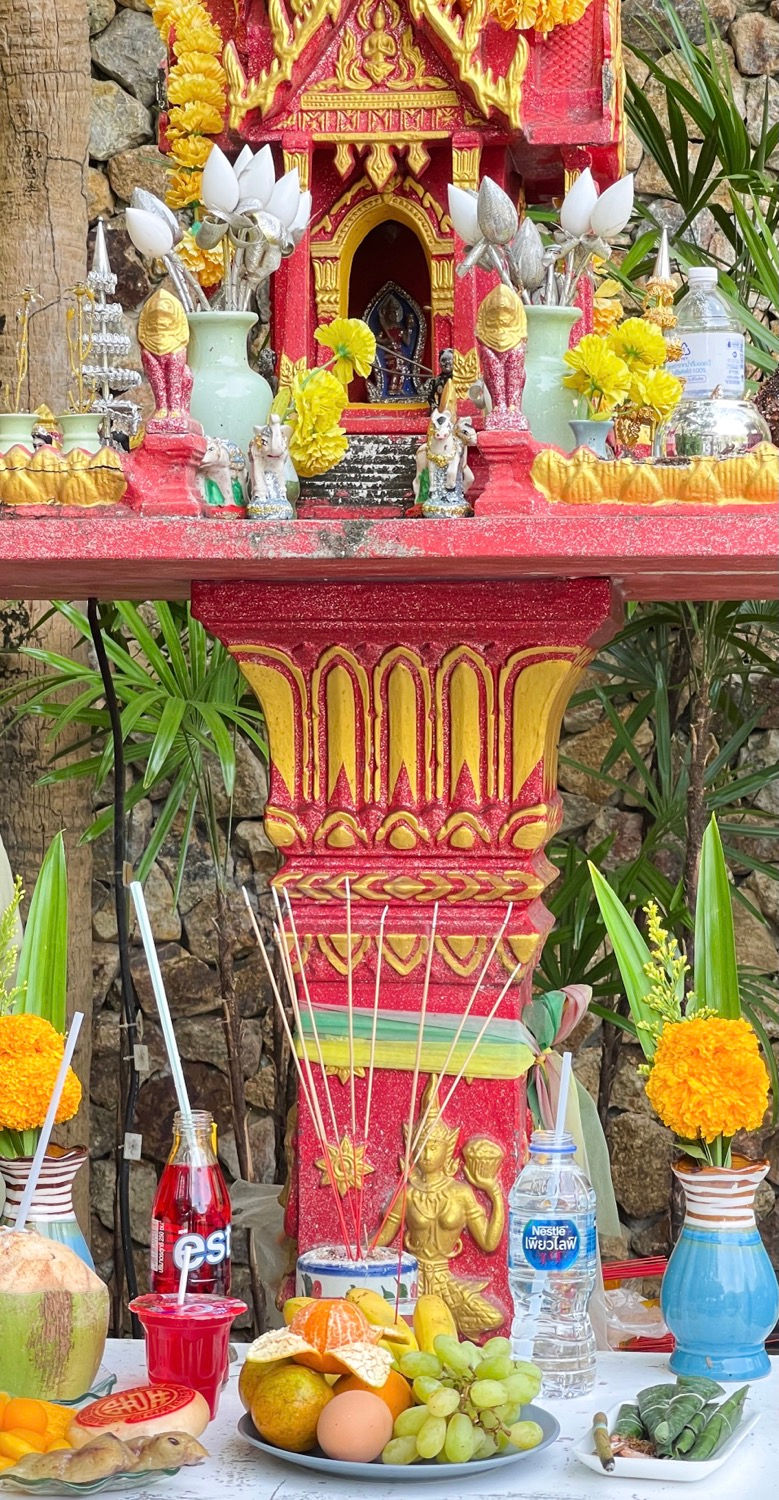Thai Culture – Spirit Houses
- Bruce Humphry

- Apr 1, 2021
- 3 min read
Spirit houses can be found outside almost every home and place of work in Thailand. Normally the spirit house is a replica of a small house or temple. The spirit house plays an important role in Thai life where folk law and beliefs about ancestors, spirits, and ghosts have a strong influence on daily life.
Spirit houses come in many forms. In the rural areas of Thailand, they may be a simple humble wooden structure placed in the corner of a rice field. In both rural and urban homes they may be a colourful and ornate concrete structure placed in the garden. In city centers, the spirit house may be a large modern structure placed near the entrance of an office complex or hotel.

What are spirit houses for?
Thailand is a very superstitious country; it is believed that the spirit house is the home of the spirit of the land or the so-called ‘Lord of the land’.
It is believed that the ‘Lord of the land’ has powers that can influence almost everything from agricultural success in rural areas to financial success and safety at home. Providing a home or shelter for these spirits is like taking out an insurance policy, by keeping the spirits happy you will remain safe and protected. If the spirits are not happy who knows what they can do!
Where should a spirit house be positioned?
As we all know, the location of your home is very important, and the same is true for every spirit house, but for very different and specific reasons.
Traditionally a spirit house should be positioned as follows: • So that it never falls within the shadow of the building that it is protecting • Not positioned on the left side of a door or facing a toilet or road • Ideally, it should face north or northeast • It should be high enough to demand respect but low enough to allow daily offerings
Luckily the home or landowner can decide where to position the spirit house, but if this is done wrong it could prove disastrous! Identifying an auspicious spot to ensure future success often requires the expertise of a Brahman priest.
There are two popular types of spirit houses: The ‘Saan Chao Thii’ is the oldest type that is also known as ‘Da Yai’ that means grandfather and grandmother. This is for the spirits of the people who used to live on the land and is usually in the form of a wooden house sat on four posts.
The other type is called ‘Saan Phra Phum’, or angel house, which has a single post and is the house of the guardian spirit. Being more formal this spirit house is usually more ornate than the others.
A Brahman priest, with astrological knowledge, can also be consulted to determine what form the spirit house should take.
What is inside a spirit house?
Depending on the type of spirit house they will contain certain small figures of people and animals.
For example, in the ‘Saan Chao Thii’ spirit house there will be an old man and women. There may also be figures of butlers, servants, and traditional Thai dancers.
The animal figures are usually elephants and horses that symbolise the spirits means of transport. In today’s modern world it is not unusual to see toy cars and even airplanes.
After the spirit house has been suitably positioned and decorated with figures, it is common that a Brahman priest is invited to a religious ceremony. This is when the spirits are invited to the spirit house and, all being well, they will take residence and protect the property and owners.
Why make offerings at the spirit house?
As well as providing a shelter for the spirits, it is also very important that they are provided with the things that they possibly enjoyed in their previous life. Daily offerings, such as food, drinks, and garlands are left at the spirit house to ensure that the guardian spirits are happy and content.
In days gone by, many Thai’s used to chew betel nut, a kind of vegetarian chewing gum. This would make their mouths go red and they would then spit onto the floor. As the country opened up to the outside world, this common habit was banned as it was deemed unhygienic. However, as the spirits of past generations used to love betel nut, it is still available to purchase for offerings at the spirit houses.
When making offerings to the spirits it is also common to offer burning incense sticks. Whilst praying it is believed that the rising smoke is transporting the wishes for protection and good luck to the heavens.
Regardless of age or social standing, almost every Thai person will wai (bow slightly with the palms pressed together), as they pass a spirit house to honour the resident spirits, and this demonstrates that this ancient tradition will be here forever.
















Comments